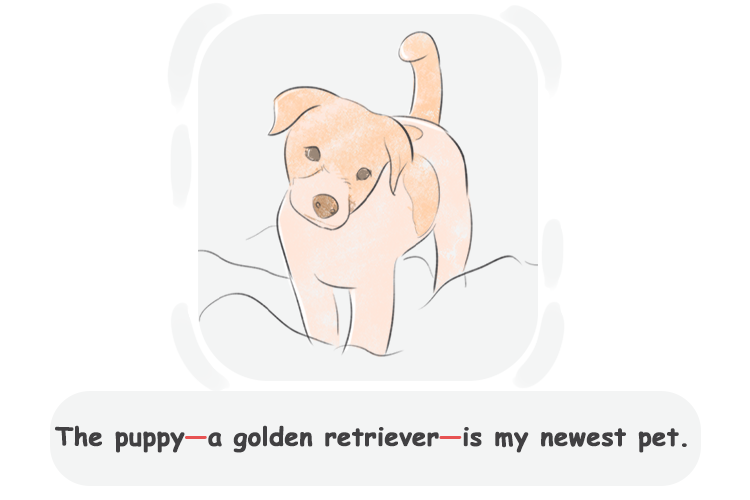Hyphens and Dashes
In this lesson you will learn about hyphens to join words and dashes to add breaks in sentences. Practice with simple examples and exercises.

What Are Hyphens?
Hyphens (-) are punctuation marks that are used to join words together, or to separate parts of a word. They play an important role in making writing clear and easy to read. The important thing to remember about hyphens (-) is they are not the same as dashes (– and —).
Hyphens: Uses
Hyphens are used to:
join prefixes to the root of words
form compound nouns
form compound adjectives
enhance clarity and readability
Forming Compound Nouns
To form a compound noun, we use a hyphen between the nouns. Here are the examples:
passer-by
daughter-in-law
comedy-ballet
dinner-dance
soldier-statesman
tractor-trailer
Warning
Do not hyphenate the adverbs and the adjectives that come after them. Here are the examples:
Highly stressful → ❌highly-stressful


Enhancing Clarity and Readability
Hyphens are also used to make the meanings clearer and the words easier to read. Sometimes the meaning of the words would change without the hyphen.
re-sign
re-design
re-read
re-elect
What Are Dashes?
Dashes are punctuation marks that are used to set off a phrase or clause. They are longer than hyphens and come in two forms: the en dash (–) and the em dash (—).
Em dashes
Em dashes (—) work like parentheses and commas and add non-essential information to the sentence, especially when the information we are adding doesn't fit well with the sentence. The em dashes can be used with space on either side or without spaces, depending on the style of writing. For example:
My best friend—who I haven't seen in years—got married yesterday.
Years ago — never mind how long precisely — I thought I could run all around the globe.
En dashes
En dashes (–) are used to replace words such as 'and', 'through', and 'to' in numerical ranges, when describing directions, relationships, or scores. Pay attention to the examples:
World War I (1914–1918) was a great disaster.
a numerical range
Midwest-southwest bridge
describing directions
Sometimes, especially in British English, the en dash does the same thing as the em dash and adds extra information to the sentence. In these cases, there are spaces on both sides of the en dash. Although commas can be used for this purpose too, dashes are preferable when the information we are adding doesn't fit well with the sentence.
Jeff – who is my best friend – already went back home.
Why Do We Use Dashes?
When we want to add a set of appositives we should put them between dashes. For example:
Do not forget to bring the stuff—flasher, ball, match, etc.
The puppy—a golden retriever—is my newest pet.
When we want to repeat an emphatic part or phrase in a sentence, we can use a dash at the beginning of the emphatic part. Check out these examples.
The beautiful sky—the clear blue sky—was filled with sea birds.
His eyes—his ocean blue eyes—forced me to think about him all the time.
Review
Hyphens and dashes are used to make special combinations.
Hyphens are widely used to make:
compound nouns
compound adjectives
Dashes are usually used to express:
Comments
(0)